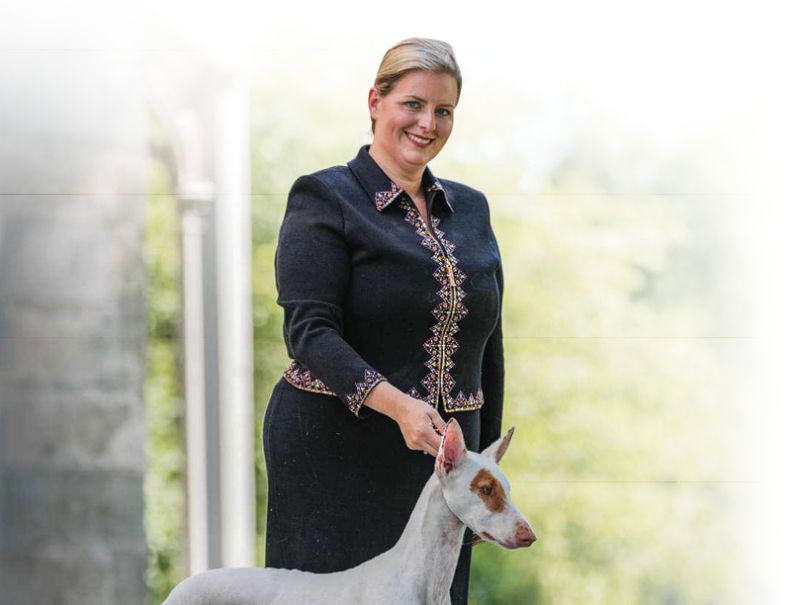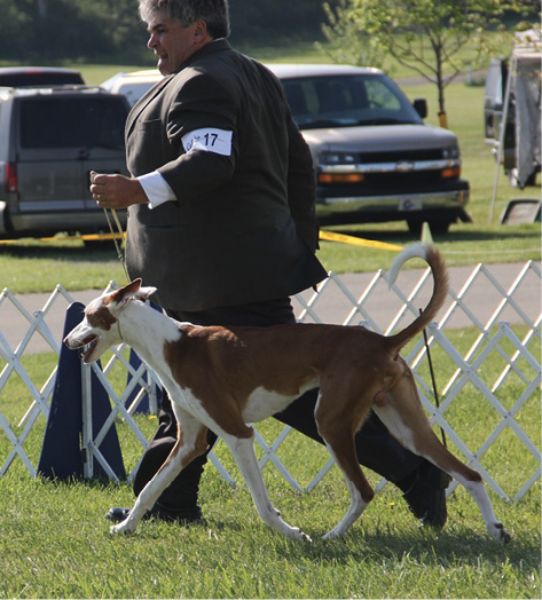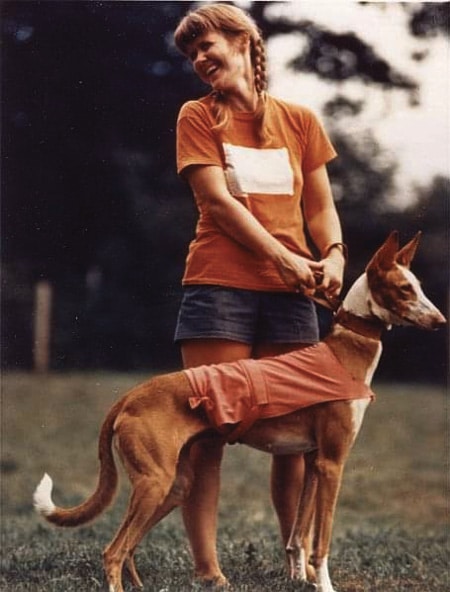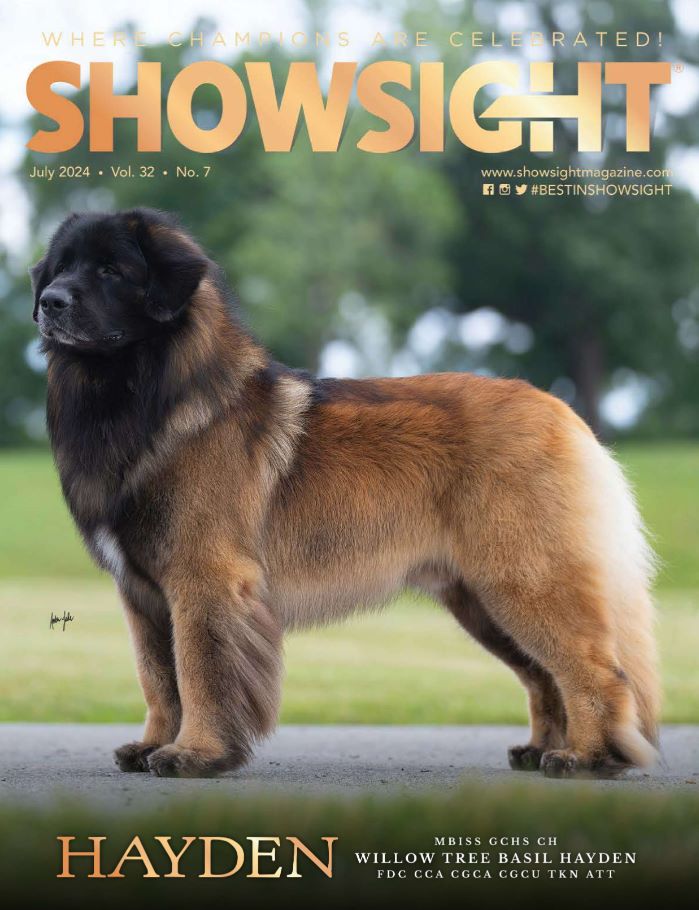Nan Kilgore Little
A Lifetime in Ibizans
When first Nan Kilgore Little saw pictures of Ibizan Hounds, she fell in love with the breed. Ibizans were new to the country in 1973. The first few came to the United states in the mid-to-late 1950s. She had written to one of a handful of breeders to find a pet. The person she wrote to was Mrs. Bobbee Preu of Preux Ibizans. Mrs. Preu had established a breeding program based on Hannibal and Tanit. The original stock came from Ibiza, imported by Colonel and Mrs. Rhoda Seone.
Nan did not realize at the time of writing that Bobbee Preu had just passed away. She did not hear back for some time and bought a delightful Bull Terrier, giving up hope on finding an Ibizan. Then she received a letter from Martin Marx DVM, nephew of Bobbee Preu. He had inherited about 20 Ibizans. Dr. Marx offered her a three-year-old bitch. She couldn’t refuse. The bitch was shipped from Kentucky to Baltimore where Nan lived at the time. This bitch was Preux Cleopatra’s Amber. “Amber” was a lovely, petite, twenty-four-inch, pinto little lady. This bitch was a very sound, nice mover, though a little rounded in the rump.
Nan also got a list of other people who had received dogs from the estate. Dean Wright was on this list. She contacted him and he introduced her to the club and the world of showing. They did pretty well, considering she and Amber were both novices to the game.
Much as Nan liked Amber, she did not have the exotic angularity and exotic aspect that attracted Nan to the Ibizan. There was, however, a bitch that epitomized her ideal. That bitch was Ilya de San Martin. Nan knew her sire was Preux Sampson, a lovely dog, but there was something else that gave the “look” she was seeking. After much searching, Nan found it came from the Belmonte line imported in 1957 by Dixon Smith who brought back Don Juan de Belmonte de San Jordi from Mallorca. Mr. Smith had bought him from a tavern owner on the coast of Mallorca.
When Nan contacted Mr. Smith, the only dogs left of the line were two brothers and a sister, Dona Villata de Hanno. She bought one of the brothers and shipped him from California to Baltimore. This was Don Victoriano de Hanno. Don Victoriano had Don Juan four times in his pedigree, plus a full sister to Don Juan. This dog was tightly bred. Don Victoriano was 28 inches tall, angular, with long legs and wonderful slanted eyes. He was dark, pretty much all over, except for his throat, toes, and tail tip. Nan bred him to Amber and got a nice litter. This was about the time the American Field Association was developing their first lure courses. What fun it was, running around the country chasing Field Trials. Amber’s litter did very well in coursing. One male, Amberlithe Simble, finished his championship undefeated.
Ibizan Hounds were still shown in the Miscellaneous Class in those days (very odd going up against Bearded Collies, Staffordshire Bull Terriers, etc.), but exhibitors payed their dues, and in 1979, the breed was recognized. Nan’s first champion was Amberlithe Phonecia. They showed together with the very first AKC champions, Sunking Eterna of Treybeau and Anubis Bacarine Carabis. Everyone went down to the Florida circuit in January.
Over the years, Nan has linebred on the Belmonte line. Her kennel name, Amberlithe, is an homage to little Amber. She has also visited and revisited Jo Stevens’ Danzante line. Nan breeds about once every five years, as this allows her to observe what she has produced. She doesn’t like to rush
into things.
There have been new imports coming from the native Spanish mainland and from the Balearic Islands. This has expanded a limited gene pool and Nan believes this has brought in some interesting, typey dogs, particularly the influx of wire-coated Ibizans. This variety has been a sadly neglected, intrinsic part of the breed. Much thanks goes to Susan Fegan for reviving this delightful and historic part of the breed. She will be greatly missed.
In the early days, there were several excellent wires that were used for breeding, mostly to smooths, but the wire individuals were allowed to go fallow. No wire get from those early dogs were put into the pedigrees, only the original dogs and their smooth offspring. Thankfully, the breed now has many wonderful representatives of the wire variety.
Nan has never owned a wire because she limits herself so much in breeding and cannot serve two masters. She has certainly considered using them, however, as she finds some of the typiest individuals are wire. She has wires in her pedigree and they have added to the perfection she seeks.
What lies in the future? Nan thinks the Ibizan is basically going in a good direction. Ibizan breeders are generally careful and are responsible caretakers of the breed. Like all sighthounds, this breed takes some understanding.











